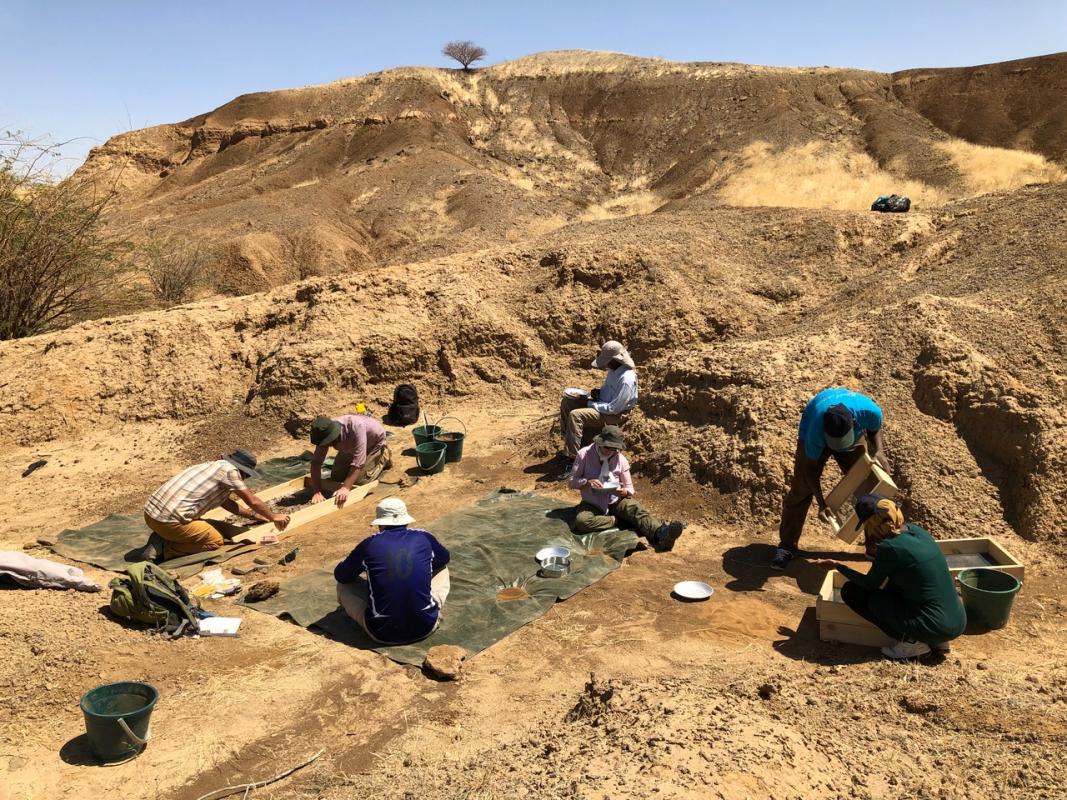It is hot, above 100 degrees Fahrenheit. Few trees and bushes provide shade in the dry sandy landscape. But it's a worthwhile walk: The international team of geologists and palaeontologists knew from the first visit in January 2018 that the Atbara Valley in eastern Sudan was a promising study area.
Palaeontological new territory
"We first surveyed a large area and identified several interesting sites," says Faysal Bibi of the Museum für Naturkunde Berlin, who coordinates the team of fourteen. The study area covers about 2000 square kilometres. It lies between two rivers, the Atbara and the Setit, both originating in the Ethiopian highlands.
These ancient rivers and their seasonal tributaries have left dry riverbeds in the landscape. First, they deposited sediments containing fossils from different ages. In a later phase, probably due to a tectonic uplift of the area, they removed these sediments. Deposits from different periods are openly accessible today.
Despite the excellent conditions, large parts of the area had not yet been scientifically investigated. Bibi successfully applied to the German Research Foundation (DFG) for funding for a three-year excavation project following the first exploration. During the funding period, his team will visit the area three times for approximately one month at a time to carry out excavations.
The fossils provide a good sketch of the fauna of the last 500,000 years. The researchers find petrified remains of species that are still found in Africa today, but not necessarily in Sudan: Hippos, elephants, rhinoceroses, giraffes, zebras, wild asses, antelopes, snakes, rodents. There are also extinct animals such as a giant buffalo, elephants of the genus Elephas and horses of the genus Hipparion.
Hominine Tools
An Acheulean chopper, a stone tool made by early hominines, found at one of the Atbara sites. Foto: Faysal Bibi/Museum für Naturkunde
Ancestors of modern humans also lived and hunted in the area. Faysal's team found various stone tools of these hominines that were probably used as knives to process meat.
"The earliest stone tools, around three million years old, are hard to tell from rocks, but at the age of 1.5 million years you can find beautifully crafted tools," says Bibi. In the Atbara Valley, researchers have mainly collected finds not older than half a million years. The exact determination of the age using luminescence dating is still pending. "We have found some places with several tools that were probably crafted and left there," says Bibi.
The last time the researchers were on site in February 2019. At this time of year it is relatively cool and dry, the rainy season has not yet set in. On the next excursions, they will look for new sites and examine some more closely. Bibi hopes for rare finds of birds, predators and possibly the hominines.
Project-title
Cenozoic Fossil-Bearing Deposits in the Atbara Valley, Sudan
Partners
- Al Neelain University, Sudan
- University of Khartoum, Sudan
- International University Of Africa, Sudan
- Leibniz-Institut für Angewandte Geophysik, Hannover
- Technische Universität Berlin
- Western University of Health Sciences, USA
Duration
01.09.2017 – 31.08.2018
01.11.2018 – 31.10.2021
Funding
Deutsche Forschungsgemeinschaft, DFG
